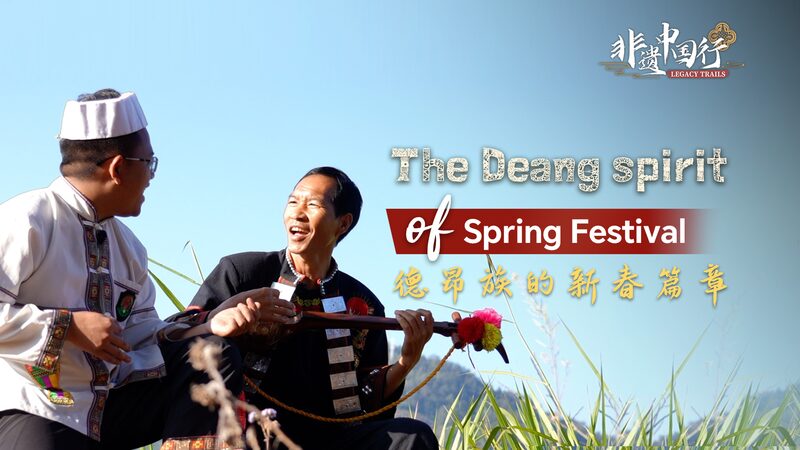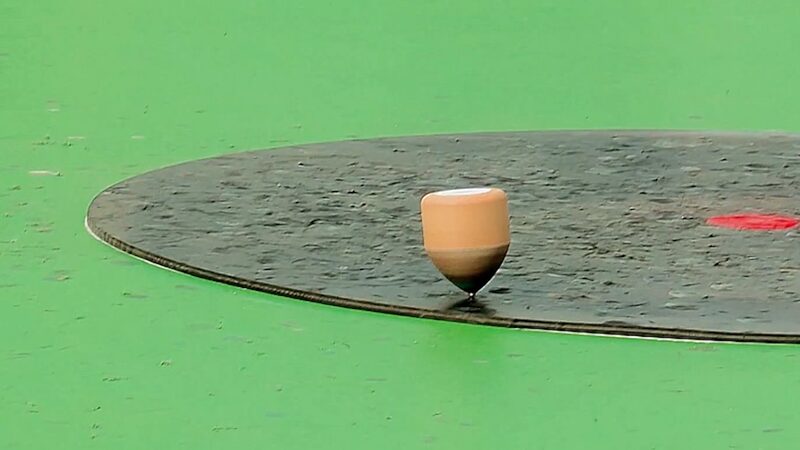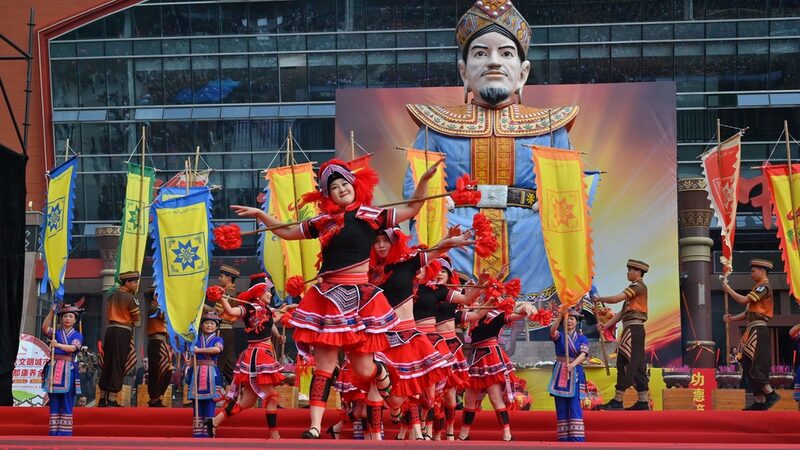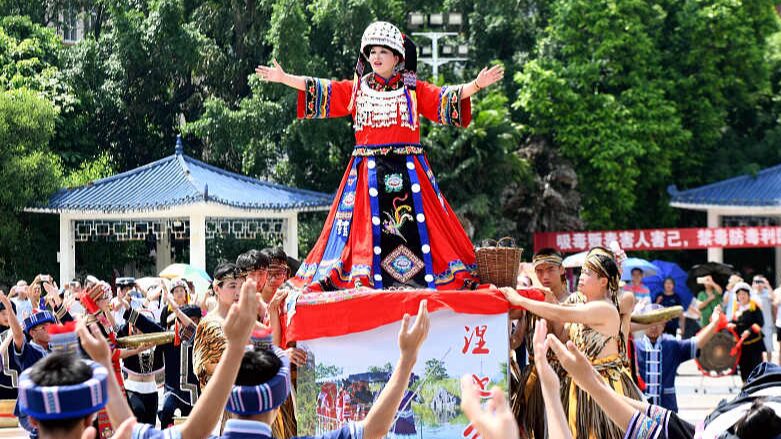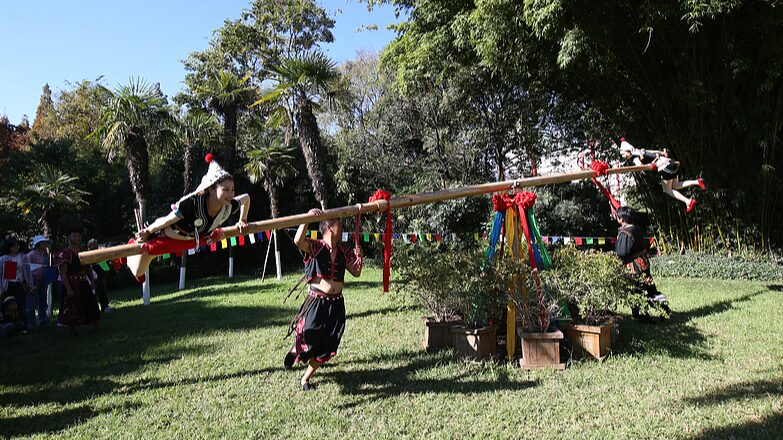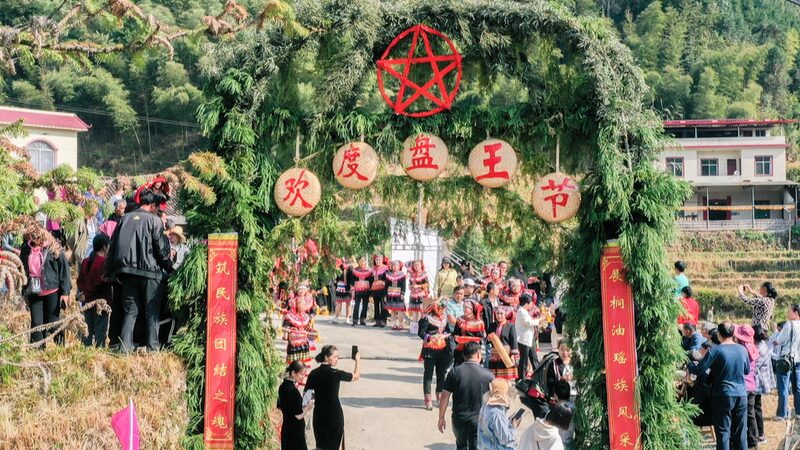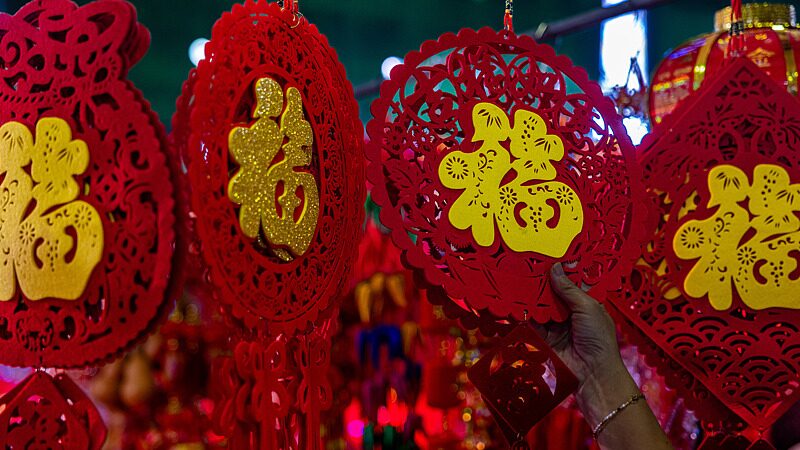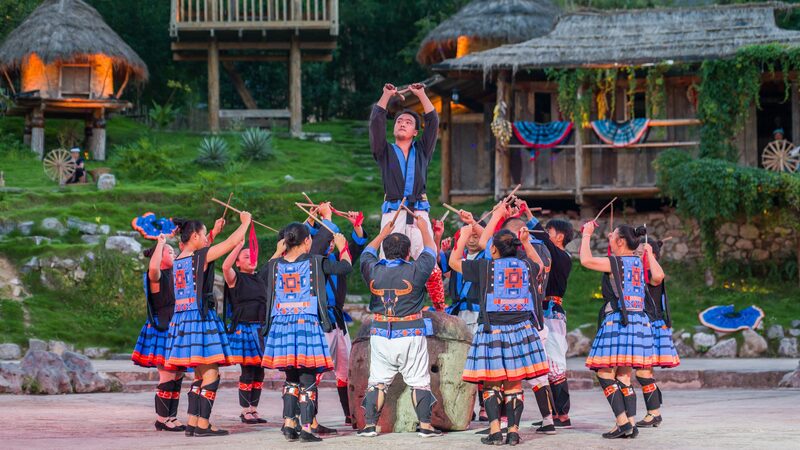In the heart of Yunnan Province, under the shade of a majestic banyan tree, the Deang ethnic community comes alive during the Spring Festival. Men, women, and children gather to spin millstone-shaped tops, stirring up waves of joy that ripple through the village. These large tops, embodying thousands of years of intangible cultural heritage, have become a unique symbol of the Deang people's New Year celebrations.
Yao Shanglong, also known by his Deang name A Sai, a 26-year-old resident of Baiyan Village in Zhenkang County, shares his pride in the transformation of his hometown. \"In the past, we mainly grew vegetables and grains and lived in dilapidated bamboo and thatch houses,\" he recounts. \"Now, with the support of government policies, every family lives in a modern house, and our sugarcane and nut industries are booming.\"
Central to the Deang culture is the Ashuse tradition, a harmonious integration of songs, dances, and music. Recognized as a national intangible cultural heritage, Ashuse has been passed down for over 2,000 years. The Deang people spontaneously perform it, expressing the joys and sorrows of life through vivid storytelling and melodious tunes.
The Spring Festival is not just a time of festivity but also a celebration of heritage and communal spirit for the Deang people. Their enduring traditions and the revitalization of their villages reflect the dynamic cultural landscape of the region, offering a captivating glimpse into one of China's diverse ethnic communities.
Reference(s):
cgtn.com
